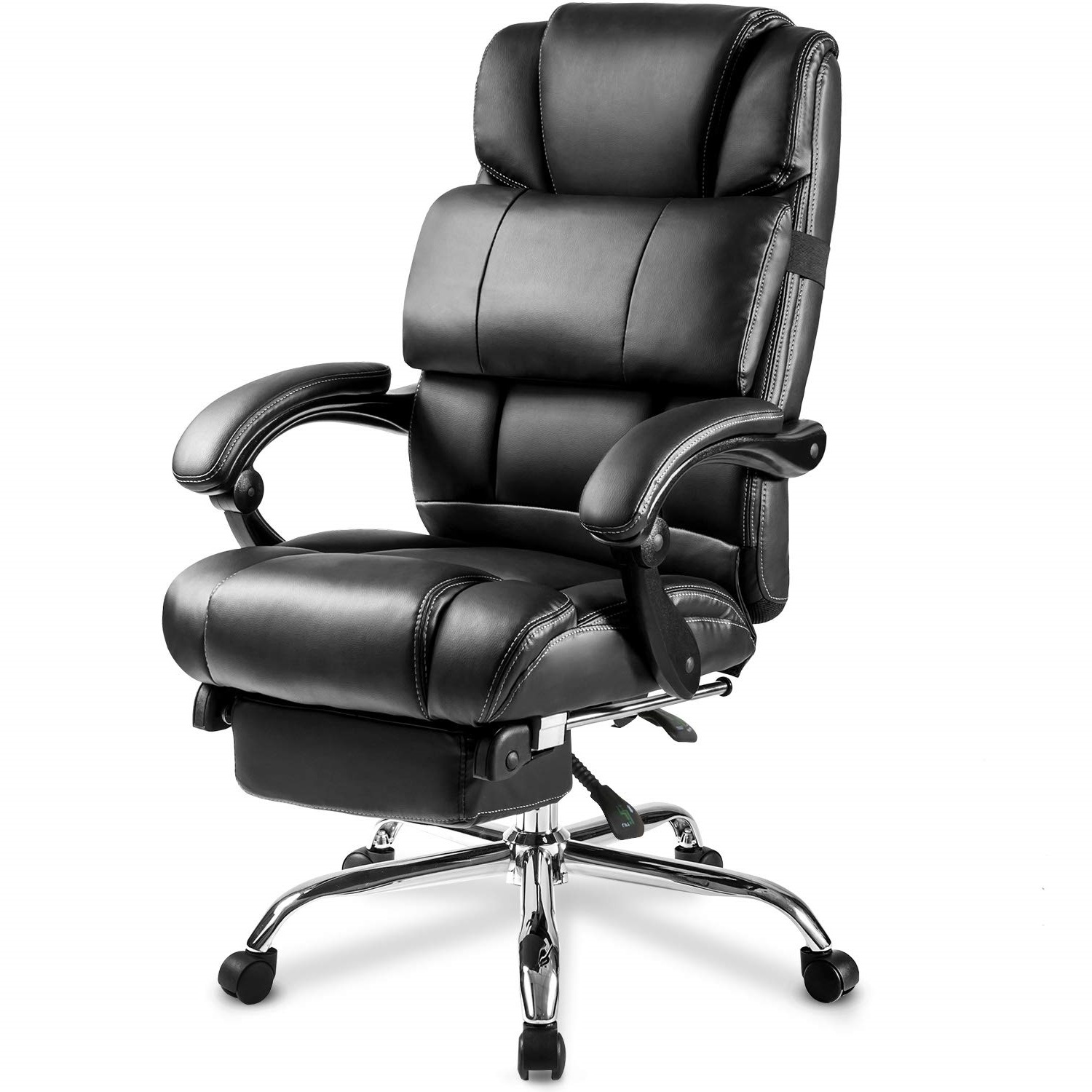Types of Leaning Mechanisms: Office Chair That Can Lean Back

An office chair’s leaning mechanism is crucial for comfort and support, allowing you to adjust your posture and find the perfect position for work. Different mechanisms offer varying degrees of movement and stability, catering to individual needs and preferences. Understanding the types of leaning mechanisms available can help you choose the chair that best suits your workspace and how you work.
Tilt Mechanisms
Tilt mechanisms allow the seat to recline backward, providing a range of leaning angles. This mechanism typically uses a lever or knob to adjust the tilt tension, which controls how easily the chair rocks back and forth.
- Advantages: Tilt mechanisms are generally affordable and offer a simple, intuitive way to adjust your leaning position. They provide a good balance between movement and stability, making them suitable for a variety of tasks.
- Disadvantages: Tilt mechanisms often have a limited range of motion, making it difficult to achieve a fully reclined position. They may also lack the precise control offered by other mechanisms.
- Customization: Some tilt mechanisms allow you to adjust the tilt tension, letting you personalize the rocking motion. You can also find chairs with tilt lock features, allowing you to lock the chair in a specific position for stability.
Synchronous Mechanisms
Synchronous mechanisms combine seat tilt with backrest movement, ensuring that the seat and backrest move in sync as you lean back. This coordinated movement helps maintain a natural posture and reduces strain on the spine.
- Advantages: Synchronous mechanisms provide a wider range of motion than tilt mechanisms, allowing you to achieve a fully reclined position. They also offer greater control over your leaning angle, ensuring optimal posture and support.
- Disadvantages: Synchronous mechanisms can be more expensive than tilt mechanisms. They may also be more complex to adjust and require some time to get used to the coordinated movement.
- Customization: Many synchronous mechanisms allow you to adjust the tilt tension and the backrest angle independently, allowing for a personalized leaning experience. Some models also feature adjustable lumbar support for added comfort and spinal alignment.
Locking Mechanisms, Office chair that can lean back
Locking mechanisms allow you to lock the chair in a specific position, providing stability for tasks that require focused concentration or a fixed posture. This feature is particularly useful for tasks that involve repetitive movements or prolonged periods of sitting.
- Advantages: Locking mechanisms offer superior stability compared to tilt or synchronous mechanisms, making them ideal for tasks that require precise movements or a stationary position. They also help prevent accidental leaning, which can be distracting during focused work.
- Disadvantages: Locking mechanisms can limit the range of motion and make it difficult to adjust your position quickly. They may also feel restrictive for users who prefer more dynamic seating.
- Customization: Some locking mechanisms allow you to adjust the locking position, letting you choose the angle that best suits your needs. You can also find chairs with multiple locking points for greater flexibility.
Office chair that can lean back – The ability to lean back in an office chair is a coveted feature for many, offering comfort and support during long workdays. While some prefer sleek, modern designs, others seek a more traditional aesthetic, often found in button back fabric office chairs.
These chairs, with their classic tufted upholstery, can also be designed with reclining mechanisms, providing a balance of style and functionality for those who desire a comfortable and elegant workspace.
Office chairs designed for prolonged sitting often feature a recline function, allowing users to adjust the backrest angle for enhanced comfort and support. While this functionality is beneficial for posture and relaxation, it can present a challenge when it comes to carrying personal belongings.
A potential solution is to utilize back of chair book bags , which attach securely to the backrest, providing a convenient storage option without hindering the chair’s recline capabilities. These bags offer a practical and stylish way to keep essential items close at hand while maintaining optimal ergonomic comfort during extended periods of sitting.